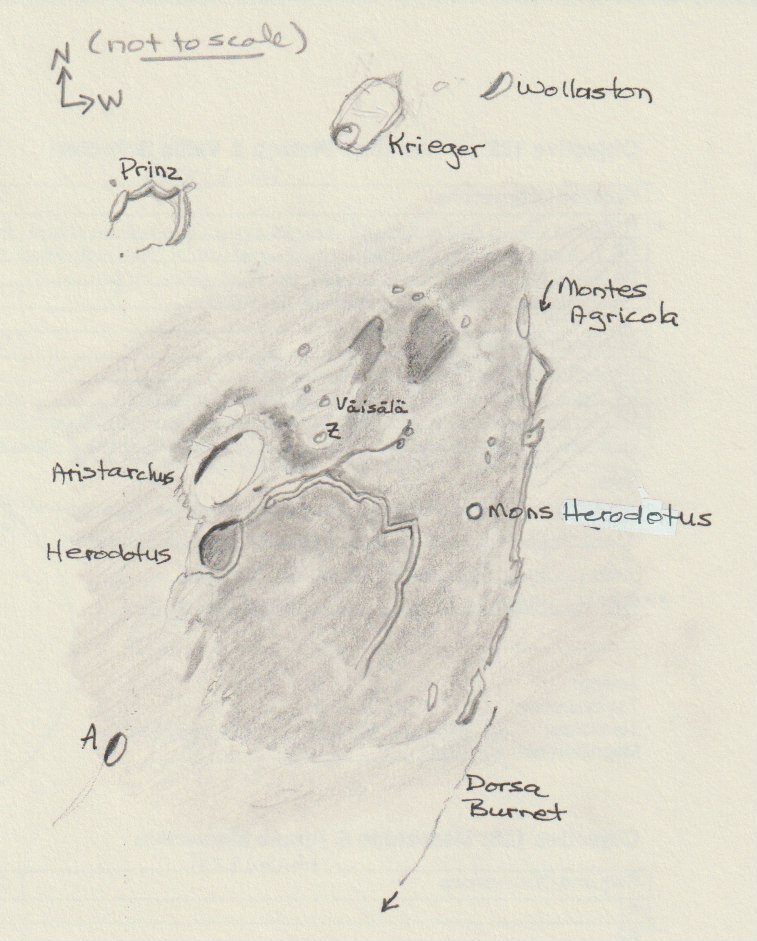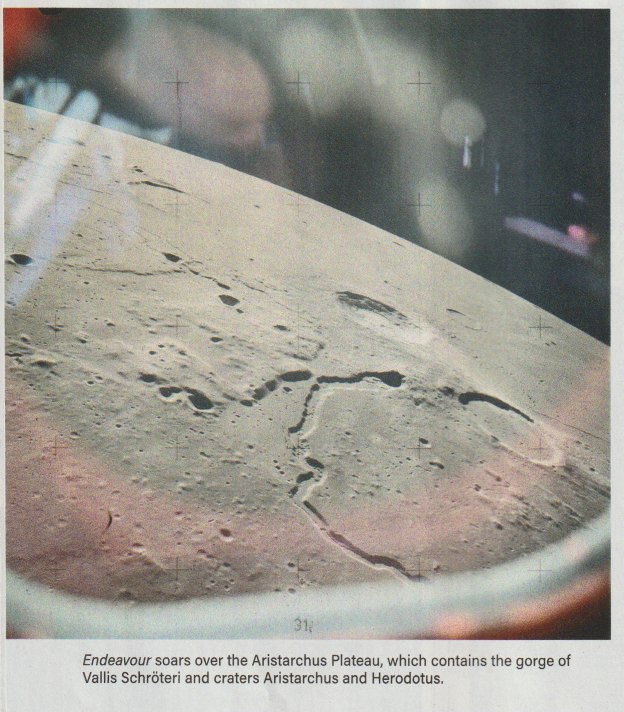IWLOP #122 – Aristarchus Plateau & Vallis Schröteri
Aristarchus is a bright, complex crater that is a little older than Tycho, and is located near the edge of a unique plateau that rises 2 km over Oceanus Procellarum. Vallis Schröteri was a lava tunnel that carried lava from the highland plateau to the adjacent basin.
Location: 23.7 N 47.7 W Origin: Impact and Tectonic Size: 40 km (Aristarchus), 230 km diameter Rukl: 18 Type: Complex Crater (CC) and Valley
Objects: Aristarchus, Mare Procellarum, Oceanus Procellarum, Vallis Schröteri, Montes Agricola, Rupes Toscanelli, Toscanelli, Rimae Aristarchus, Herodotus, Mons Herodotus
Others Identified: Angstrom, Bessarion, Bessaarion A, Brayley, Dorsa Burnet, Krieger, Montes Harbinger, Prinz, Schiaparelli, Väisälä, Wollaston
Reference: Rukl 18
Location: Home
Date: 2021-04-24
Time: 9:53 PM ADT
Equipment: 10" Meade SCT, 4.7 mm
Magnification: x530
Transparency: Good (3)
Seeing: Good (3)
R1: Aristarchus was quite bright. Bright rays of ejecta to the south and west. The diamond-shaped plateau was darker than the surrounding Oceanus Procellarum. Ejecta may have gone as far as Montes Carpatus and meets those of Kepler in the south.
R2: Vallis Schröteri starts on Oceanus Procellarum, meanders N, then NW, then South. The rille ends in a cobra head north of Herodotus.
R3: Montes Agricola well lit on the eastern slopes. It formed a border of the diamond plateau.
C1: The 3 rilles not observed at this time.
C2: Saw the cobra head NE of Herodotus.
C3: Mons Herodotus was a singular bright spot between the Vallis and Montes Agricola. Two other bright "spots" to the North but too far to be related (?).
This was my first observing of this feature. It seen again on July 10, 2022 with our youngest granddaughter.
|
My sketch as seen through my Meade SCT telescope that provides a mirror-reversed image.
|
Photo from Astronomy magazine, June 2021 edition.
|

